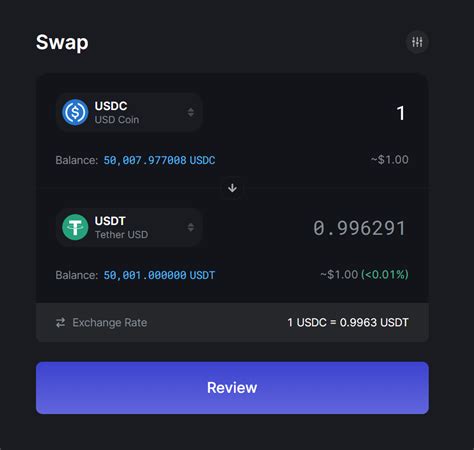Here is an article based on your request:
Understand the exchange of universal routers Ethereum
As a developer building a simple router, you probably know the concept of decentralized exchanges (DEX) and their underlying mechanics. In this article, we will dive into the universal router exchange function on Uniswap V3, focusing on the problems you encountered during development.
What is the exchange of universal routers?
The universal router is a decentralized exchange (Dex) built above the Ethereum blockchain. It allows users to exchange tokens using a single interface, which facilitates interaction with various DEFI platforms without having to worry about complex contractual interactions or high costs. The universal router is designed to be flexible and adaptable to different use cases.
Exchange of tokens on Uniswap V3
When you use the universal router to exchange tokens on UNISWAP V3, you essentially perform an intelligent contract that delegates the tokens exchange process to the Uniswap protocol. This allows interoperability between different blockchain networks, allowing transparent exchanges on several platforms.
However, when you use the universal router on Uniswap V3, several potential problems could bring a swap. In this article, we will explore the reasons for these problems and provide advice on how to solve them.
Current problems with the exchange of tokens on Uniswap V3
Let’s dive into some of the most common problems you encountered during the exchange of tokens on Uniswap V3:
- Value of non -valid or empty message : one of the main causes of Swaps has remained unlike or empty of message values. If a user sends an insufficient quantity of token or does not include all the required parameters, the universal router will reject the exchange.
- Non -valid or missing requirements : The universal router also requires specific requirements to be met before running a swap. For example, this might require that the sender has sufficient balance on one side of trade. If these requirements are not fulfilled, the router can return the exchange.
- Intelligent contract problems : Sometimes the intelligent contract that executes the swap is defective or incompatible with the version of the Uniswap V3 protocol. This can cause an income exchange.
DEBUGNING AND RESOLUTION strategies
To solve problems with the exchange of tokens on Uniswap V3 using the universal router, try these strategies:
- Check the value of the message : Make sure that the value of the message contains all the required parameters (for example, amount of the token, trade side) and is not empty.
- Check the requirements of the smart contract
: Examine your smart contract to make sure it meets the minimum requirements to execute a swap on Uniswap V3.
- Inspect the state of the router : Use tools like @ uniswap / swap (for specific problems with uniswap v3) or
ethers.jsto inspect the state of the router before and after the exchange, Which can help identify any potential problem.
Best practices to build a universal router
To build a more robust and reliable universal router, consider the following best practices:
- Use a coherent message format

: standardize your message format to make sure that the universal router can interpret and execute Swaps correctly.
- Make error management : Develop a robust error management system to catch and manage all the problems that can arise when executing the swap.
- Deep test : Perform in -depth tests on different blockchain networks, including UNISWAP V3, to identify and solve potential problems.
By understanding the underlying mechanics of the universal router exchange function on Uniswap V3 and by implementing best practices to create a robust router, you can help ensure transparent trading experiences for users on various platforms- FORMS DEFI.
